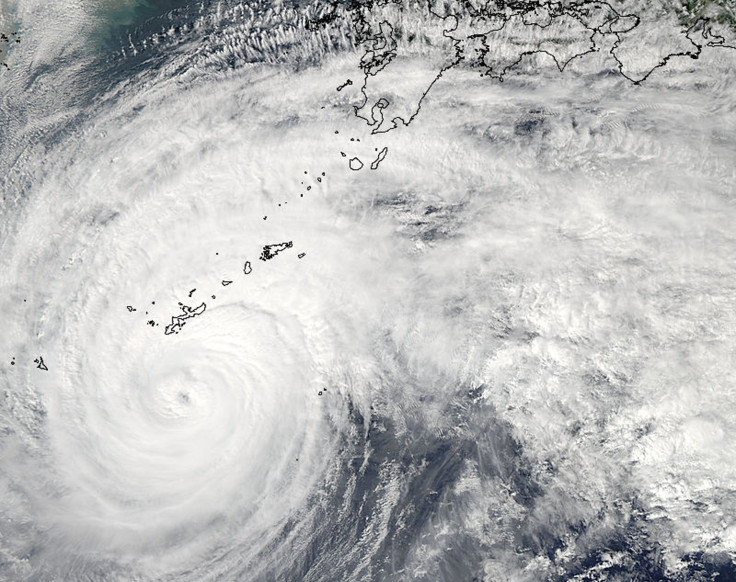Vongfong Leaves At Least 2 Dead, 1 Missing In Japan

Update as of 5:35 a.m. EDT: At least two people are dead while another person is missing after Typhoon Vongfong passed through Japan, Agence France-Presse reported Tuesday.
Tropical storm Vongfong made landfall in Japan on Monday and brought the southern part of the island nation to a standstill. At least 60 people were injured and one person went missing. Vongfong was downgraded from a typhoon over the weekend, but meteorologists said it remains incredibly powerful.
Authorities delivered evacuation orders to a million people, according to the Wall Street Journal. At least 500 flights and a number of train services were suspended in southern Japan on Monday. The Japanese islands are still reeling from Typhoon Phanfone, which hit the islands last week. Phanfone killed seven people and caused landslides near Yokohama.
The storm is expected to blow through the rest of Japan, including Tokyo by Tuesday, bringing 11 inches of rainfall with it. Vongfong will hit the Fukushima Dai-ichi nuclear power plant in the Tohoku region early Wednesday morning and then move east off the coast and become a low-power tropical depression.
Some surfers sought to take advantage of the massive waves Vongfong brought to the beaches of Kagoshima along Japan’s southern coast. Surfer Magazine calls it the "storm of the year."

Vongfong produced winds at more than 205 miles per hour and 50 foot waves in the open ocean last week, when it became the strongest tropical cyclone “all year anywhere on Earth,” according to AccuWeather. Watch NASA footage of Vongfong shot on Thursday below. Vongfong’s eye is around 25 miles in diameter in the video:
© Copyright IBTimes 2024. All rights reserved.












